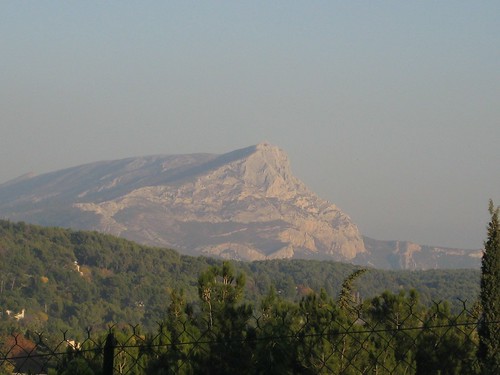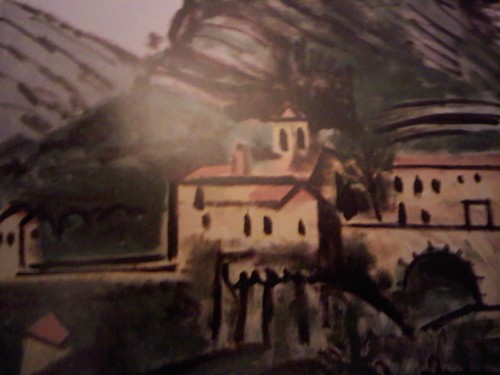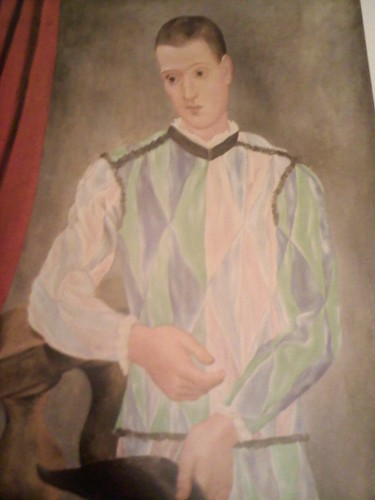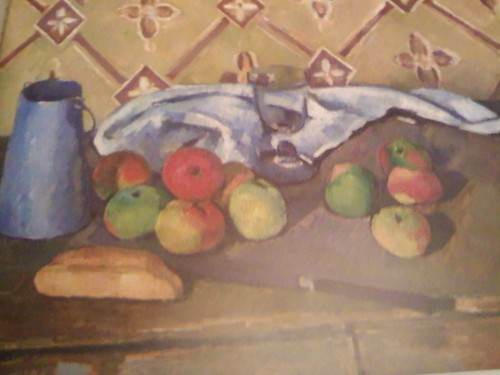On first glance, it might seem strange to find such connections between a French Impressionist and a Spanish Cubist. But even though they never met, Picasso described Cézanne as a soul mate and "artist father." He carefully studied Cézanne's work and collected many of his pieces. Eventually, Picasso purchased a chateau at the foot of Mons Saint Victoire, the object of Cézanne's most famous works. The photo below is taken from the very location that Cézanne is said to have painted his masterpieces of the mountain.


Piscasso never dared to duplicate Cézanne's paintings of Mt. St. Victoire. In fact, he rarely painted landscapes. However, he felt a superstitious call to capture the image of a new home through his brush. Picasso's impression of Le Château de Vauvenargues is pictured above.
Throughout his career, Picasso took Cézanne as inspiration. Early on he studied Cézanne's methods and subjects. When some of these early works are placed side by side, it's difficult to distinguish which artist painted which painting. This is evident in a series of Harlequin paintings. The comedic dancers would have been well known by both men living near the Mediterranean. Note: Picasso's harlequin is on the right.


Picasso's relationship with Cézanne's work went well beyond imitation. He recognized that Cézanne was exploring new ways of representing depth in still art. Later in his career, Cézanne retreated into his studio and began obsessively painting still life portraits of household items and table settings. In many of these paintings, he skews the surface of the table and arranges the objects such that there is a greater illusion of depth projected. In the painting below, it's no accident that the knife overhangs the edge of the table. Picasso picked up on these subtleties and experimented with ways to exaggerate the perspective. In several of his own still life paintings, he reduces the scene to only the basic elements necessary to convey mass, space and depth.


I was surprised at the number of paintings that Picasso did in homage to Cézanne. Even some of his well known works have subtle features borrowed from Cézanne. In the images below, you might think it was just coincidence that both men wear hats and smoke a pipe. However, the artist himself credits Cézanne's "Man with Pipe" as inspiration. Picasso, though, is likely to have read something deeper into the original painting. His interpretation seeks to duplicate the essence of the portrait, if not the brush strokes. Now that's a deep thought.

![Reblog this post [with Zemanta]](http://img.zemanta.com/reblog_e.png?x-id=8c45f790-c32e-475c-92d3-aa3e05741875)

No comments:
Post a Comment